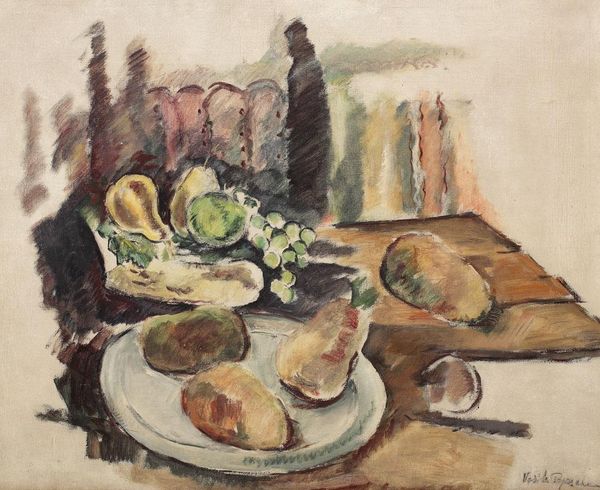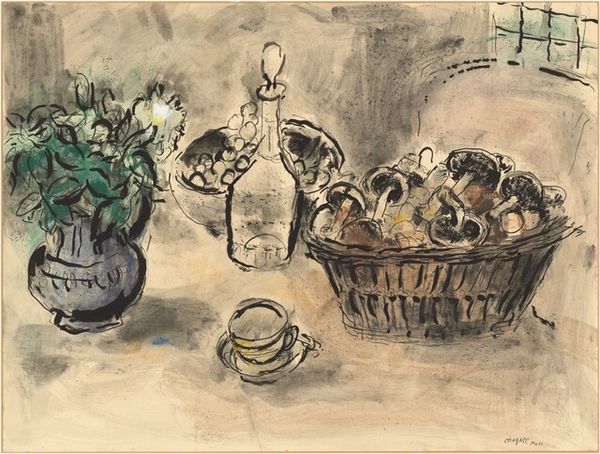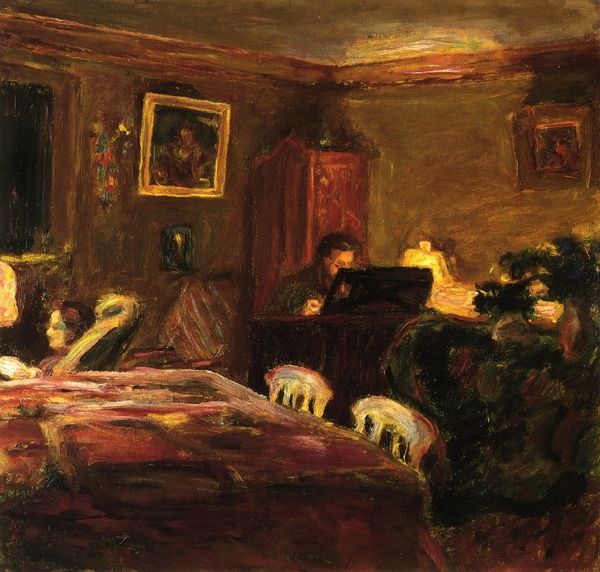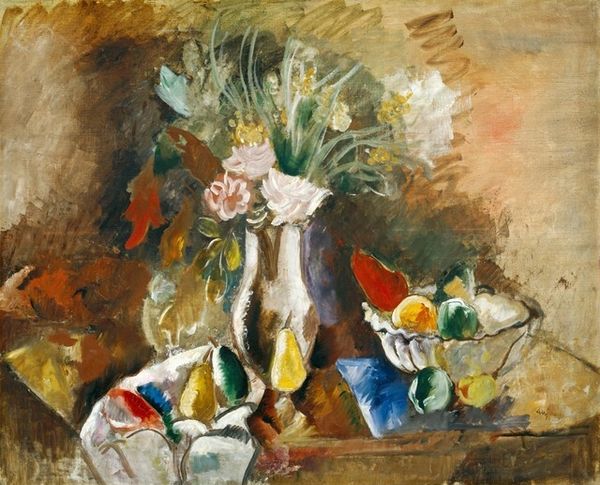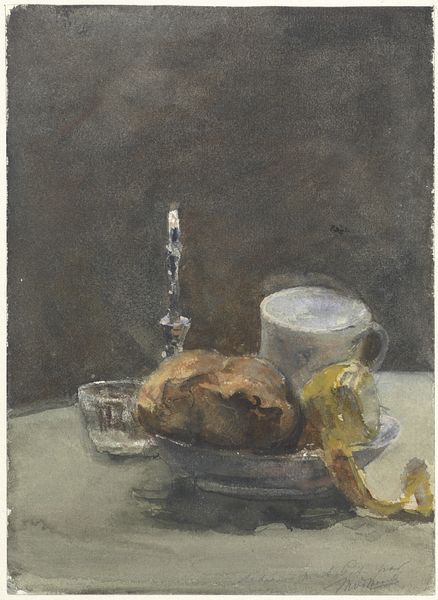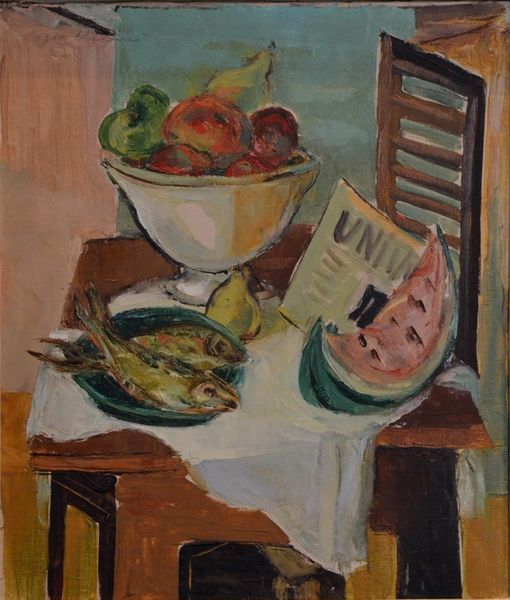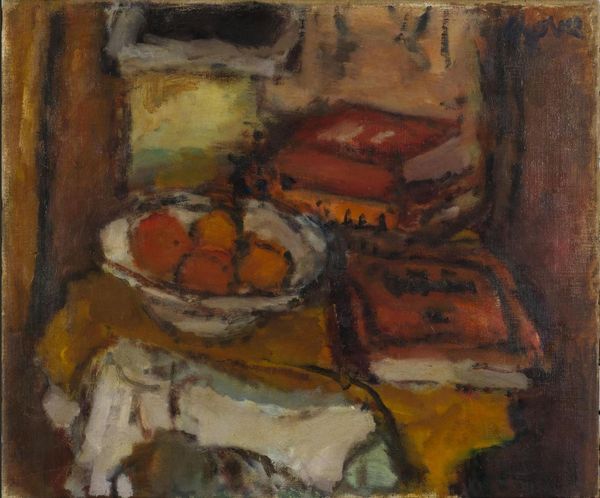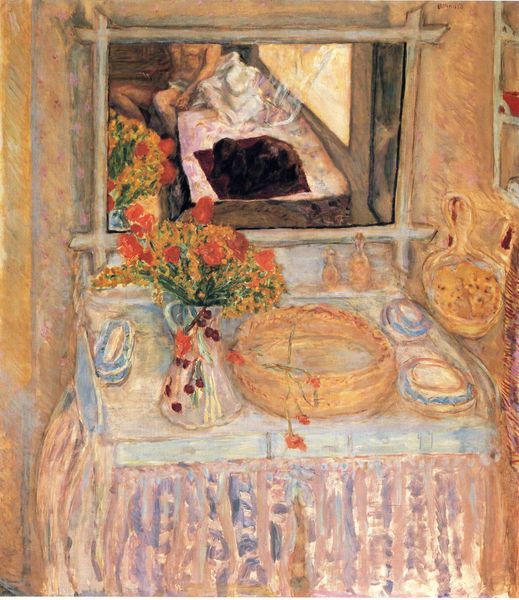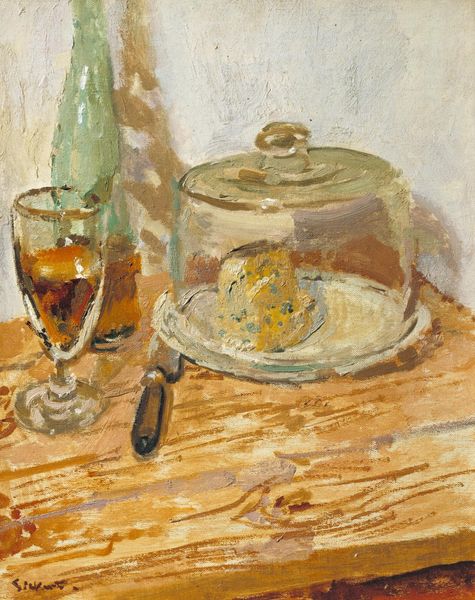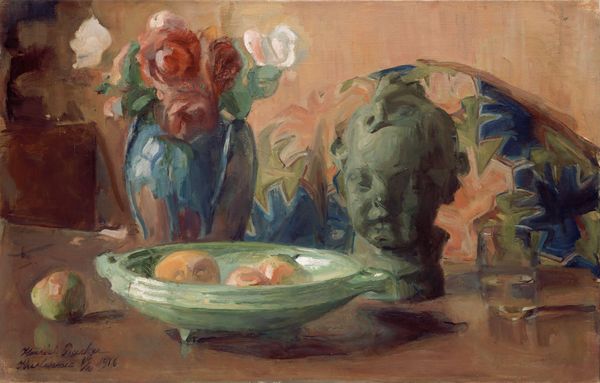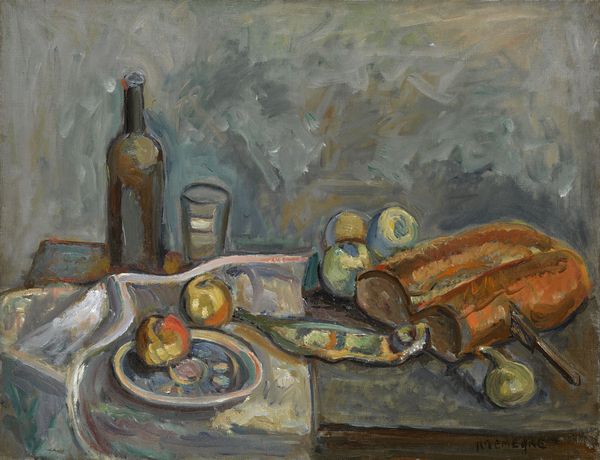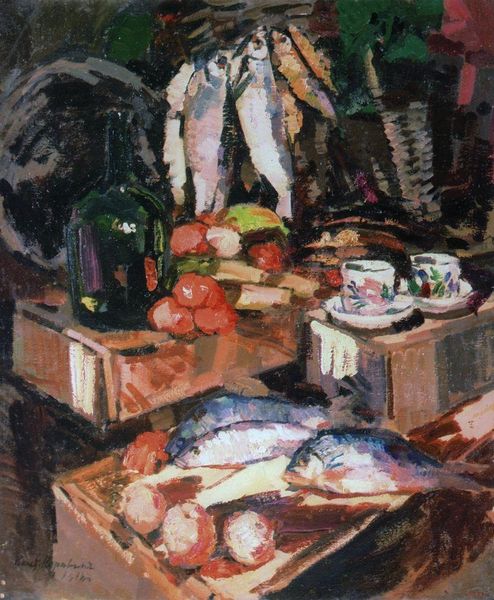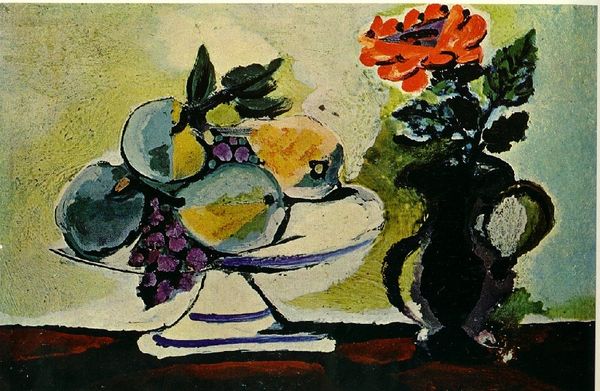
painting, oil-paint, impasto
#
painting
#
oil-paint
#
oil painting
#
impasto
#
romanticism
#
genre-painting
Copyright: Public domain
Editor: So this painting, "Table with Cake" by Nikolaos Gyzis, is a feast for the eyes, even if the exact date is unknown. The impasto is incredible. The whole thing has a very intimate, almost domestic feel. What do you make of it? Curator: It’s interesting to consider Gyzis’s piece within the context of genre painting during his time. This focus on everyday scenes speaks volumes. Why capture such a commonplace moment? Editor: That’s a good question. Is it about idealizing domesticity, or maybe something else? Curator: I think it reflects the rising middle class and their desire for representation in art. Before, art often focused on nobility or religious scenes. Here, the cake, the bottles, the very *stillness* of the scene becomes important. Were these objects readily accessible to most people? What does owning them signify about social status? The presentation of food became almost ritualistic, imbued with socio-political meaning. Editor: So, the act of displaying the cake becomes almost as important as the cake itself? Curator: Precisely. And look at how the brushstrokes create texture and movement despite the subject's stillness. It’s not just a table with cake; it's a performance of prosperity and taste, available for public consumption within the controlled environment of, say, a salon. Editor: I hadn't thought of it as a "performance" before, but that totally changes how I see it. It makes it more than just a simple still life. Curator: Thinking about the socio-political forces at play definitely adds another layer, doesn’t it? I'm left wondering what an original viewer would have seen here, how the artist may have been responding to his public. Editor: Absolutely! Considering the viewers and the cultural context changes the whole viewing experience.
Comments
No comments
Be the first to comment and join the conversation on the ultimate creative platform.
